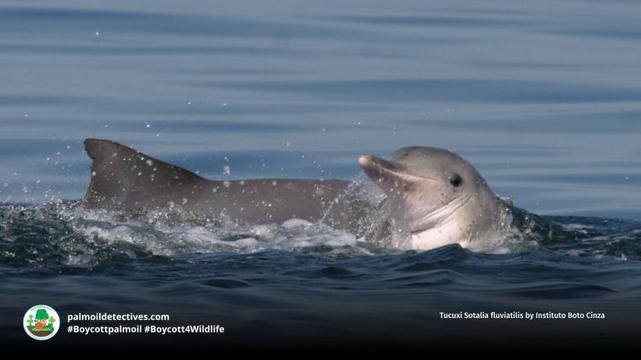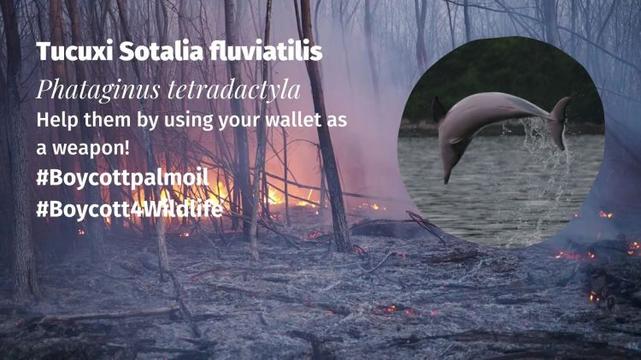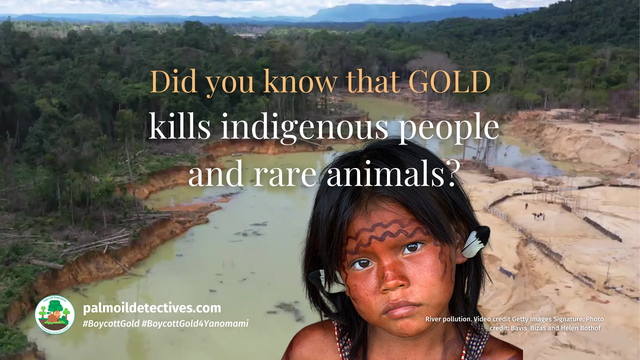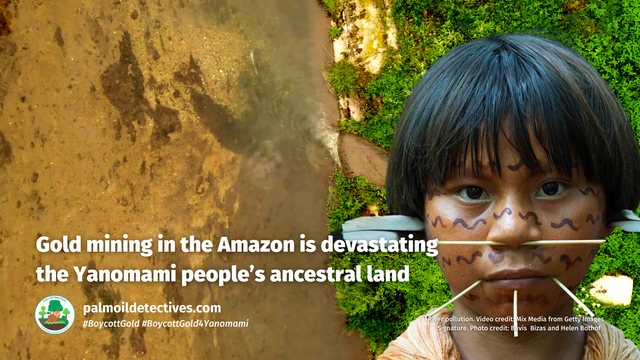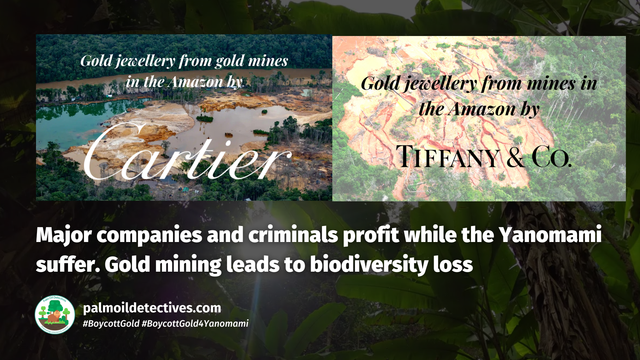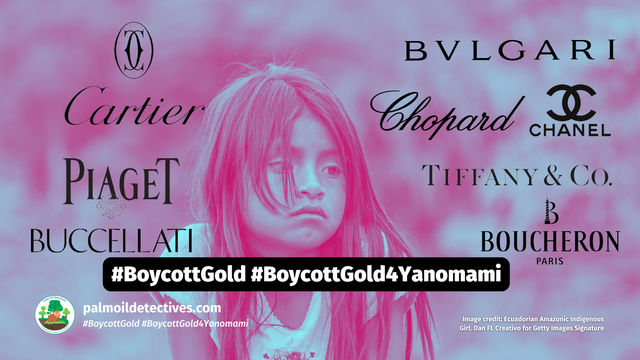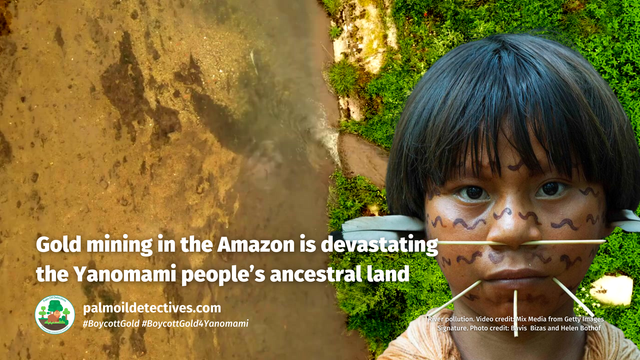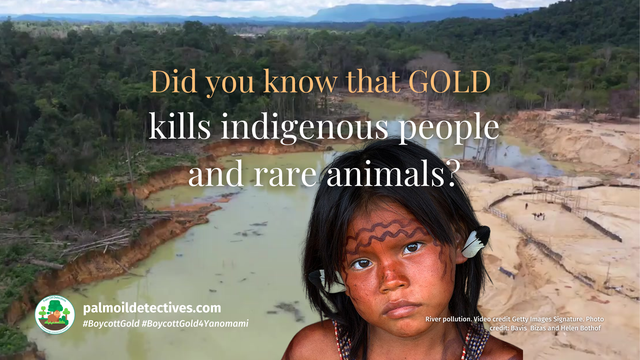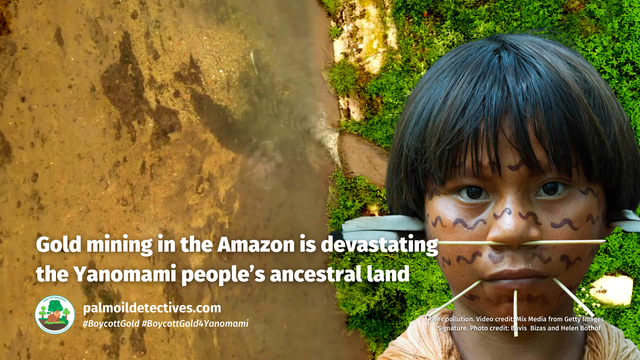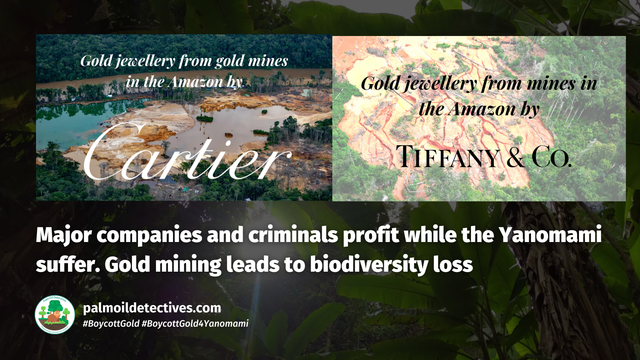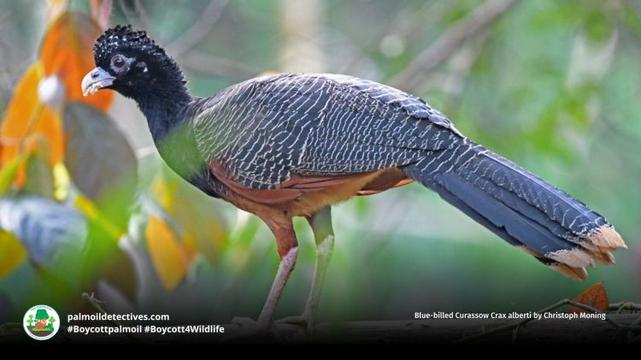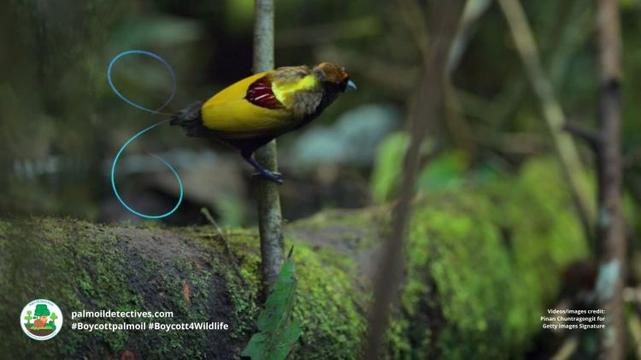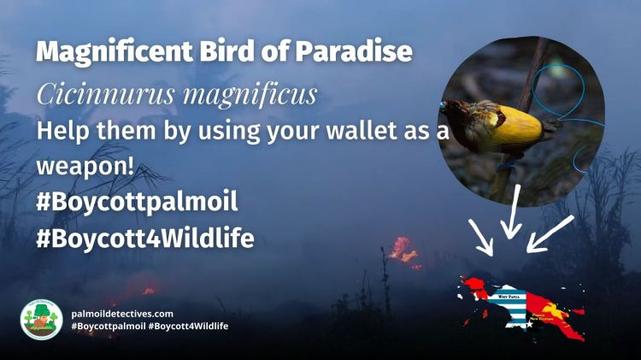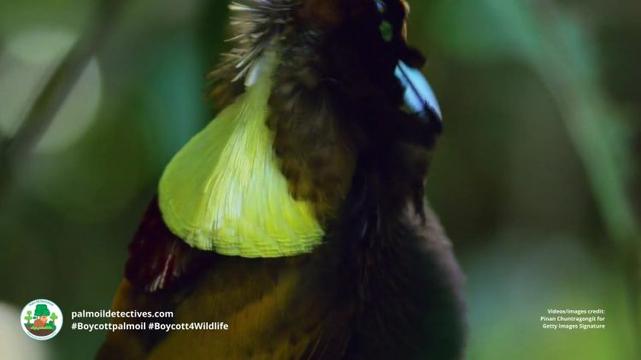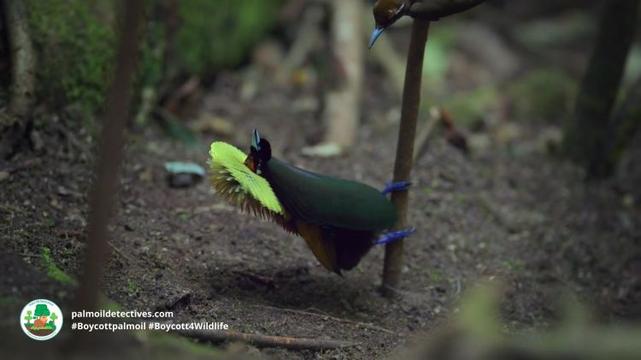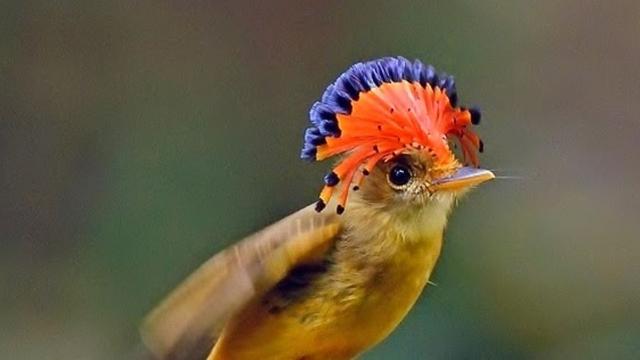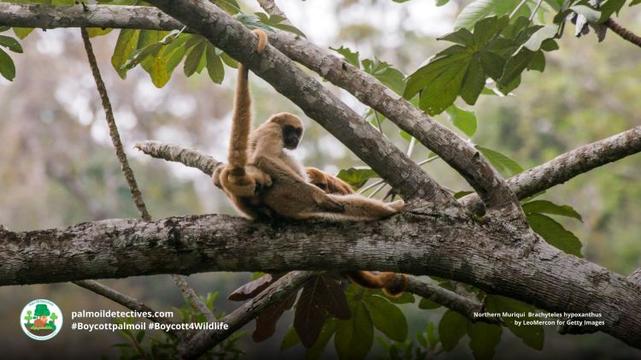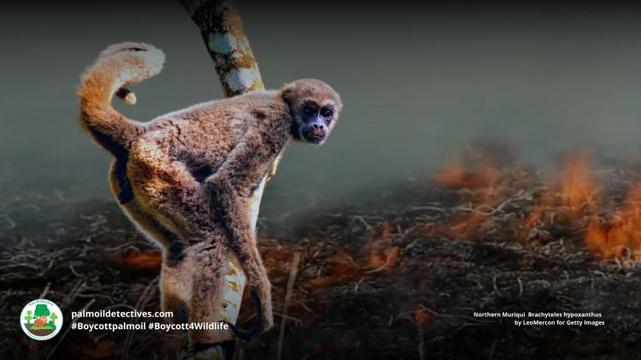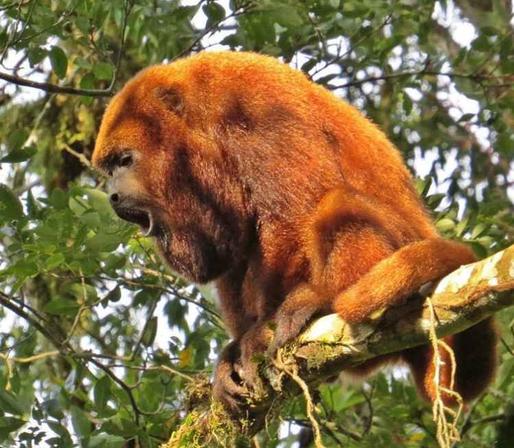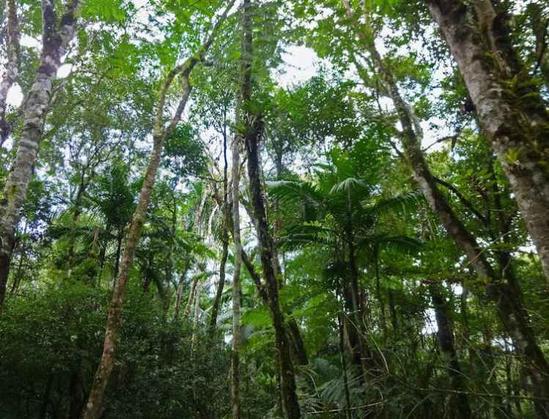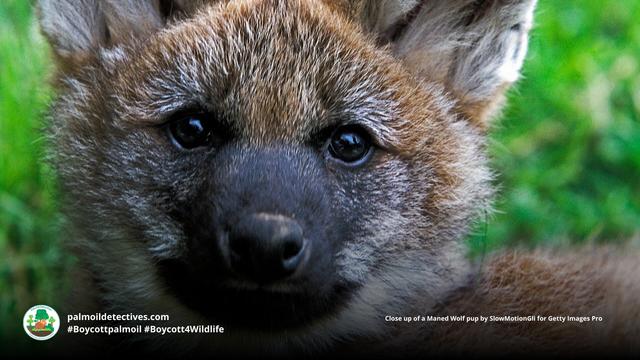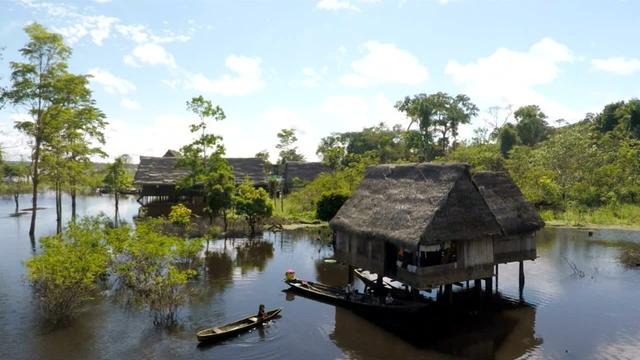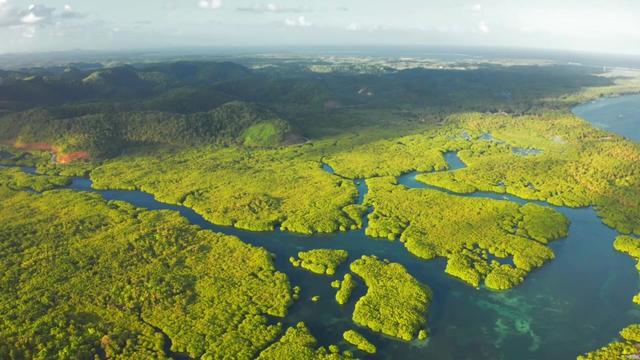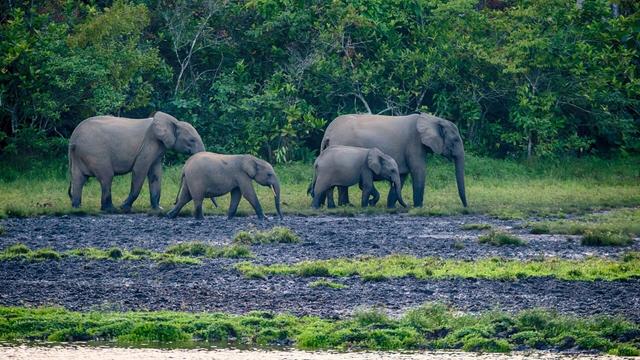It's #InternationalJaguarDay, The mighty #Jaguar 🐆 is the largest apex #predator in the Americas! 🇧🇷🇪🇨Endangered by #palmoil #gold #meat #deforestation Make sure you #BoycottGold #Boycottpalmoil, go #vegan to help them! https://palmoildetectives.com/2022/08/28/jaguar-panthera-onca/?utm_source=mastodon&utm_medium=Palm+Oil+Detectives&utm_campaign=publer #Boycott4Wildlife @palmoildetect
#boycottgold
Playful and intelligent #Tucuxi are small #dolphins 🐬 of #Amazonian rivers in #Peru 🇵🇪 #Brazil 🇧🇷 #Ecuador 🇪🇨 and #Colombia 🇨🇴. #PalmOil and #GoldMining are major threats 😿 Fight for them! #BoycottGold #BoycottPalmOil #Boycott4Wildlife
Tucuxi Sotalia fluviatilis
IUCN Red List Status: Endangered
Location: #Brazil, #Peru, #Colombia, #Ecuador
Found throughout the #Amazon and Solimões River systems, including major tributaries and large lakes. Their range spans lowland rainforest areas of Brazil, southeastern Colombia, eastern Ecuador, and southern Peru.
The #Tucuxi, a small freshwater #dolphin of #Peru, #Ecuador, #Colombia and #Brazil now faces a dire future. Once common throughout the Amazon River system, they are now listed as #Endangered due to accelerating population declines. Threats include drowning in fishing nets, deforestation, mercury poisoning from gold mining, #palmoil run-off, oil drilling, and dam construction. A shocking 97% decline was recorded over 23 years in a single Amazon reserve. Without urgent action, this elegant and playful river dolphin could vanish from South America’s waterways. Use your wallet as a weapon against extinction. Choose palm oil-free, and #BoycottGold #BoycottPalmOil #Boycott4Wildlife
Playful and intelligent #Tucuxi are small #dolphins 🐬 of #Amazonian rivers in #Peru 🇵🇪 #Brazil 🇧🇷 #Ecuador 🇪🇨 and #Colombia 🇨🇴. #PalmOil and #GoldMining are major threats 😿 Fight for them! #BoycottGold #BoycottPalmOil #Boycott4Wildlife @palmoildetect https://palmoildetectives.com/2025/11/23/tucuxi-sotalia-fluviatilis/
Share to BlueSky Share to TwitterClever and joyful #Tucuxi are #dolphins 🐬💙 endangered by #hunting #gold #mining and contamination of the Amazon river 🇧🇷 for #PalmOil #agriculture ☠️ Use your wallet as a weapon and #BoycottGold 🥇🚫 #BoycottPalmOil 🌴🚫 #Boycott4Wildlife @palmoildetect https://palmoildetectives.com/2025/11/23/tucuxi-sotalia-fluviatilis/
Share to BlueSky Share to TwitterAppearance & Behaviour
Tucuxis are often mistaken for their oceanic dolphin cousins due to their streamlined bodies, short beaks, and smooth, pale-to-dark grey skin. But these freshwater dolphins are wholly unique—adapted to life in winding river systems where water levels rise and fall dramatically with the seasons.
What sets them apart is their remarkable intelligence and tightly knit social groups. Tucuxis are playful and curious by nature. They leap from the water in graceful arcs, sometimes spinning mid-air.
The Tucuxi, sometimes called the ‘grey dolphin’ due to their uniform colouring, resembles a smaller oceanic dolphin, with a streamlined body and slender beak. Their colour varies from pale grey on the belly to darker grey or bluish-grey along the back.
They travel in small groups of two to six, displaying coordinated swimming patterns. In rare cases, they may form groups up to 26 individuals, particularly at river confluences. Known for their agility, they leap and spin in the water with a grace that belies their size. Tucuxis are particularly drawn to dynamic habitats like river junctions, where waters mix and fish gather.
Threats
- Widespread deforestation from palm oil plantations Palm oil plantations are rapidly expanding across the Amazon, clearing vast tracts of forest that stabilise riverbanks and filter water. This deforestation leads to increased sedimentation in rivers, altering flow patterns and reducing water clarity—conditions that directly disrupt the Tucuxi’s feeding and movement. Run-off from fertilisers and pesticides used in palm oil monocultures also poisons aquatic ecosystems, harming Tucuxis other Amazonian dolphin species and the fish they rely on.
- Toxic mercury pollution from gold mining Artisanal and illegal gold mining in the Amazon releases massive quantities of mercury into the water, contaminating fish and other aquatic organisms. Tucuxis, as top predators, ingest this mercury through their prey, which accumulates in their tissues and causes neurological damage, weakened immunity, and reproductive failure. Mercury exposure is one of the most insidious threats, as it persists in ecosystems long after mining has ceased.
- Incidental drowning in fishing nets Tucuxis are frequently caught and killed in gillnets and other fishing gear as bycatch. Tucuxis and other Amazonian dolphins often inhabit the same confluence zones and productive fishing grounds targeted by local communities, making entanglement almost inevitable. Many carcasses are never recovered, having either been discarded by fishers or lost to river currents, meaning actual mortality rates are likely far higher than reported.
- Deliberate hunting for use as fish bait Though illegal, Tucuxis continue to be targeted and killed in parts of Brazil, especially near the Mamirauá and Amana Reserves, where they are used as bait in the piracatinga (catfish) fishery. This brutal practice involves harpooning or netting dolphins and using their flesh to lure fish, often alongside the killing of Botos. Despite a national ban, weak enforcement and ongoing demand mean this threat persists in remote and lawless regions.
- Illegal fishing with explosives and toxins In certain areas, particularly in Brazil and Peru, fishers use home-made explosives and poisoned bait to stun or kill fish en masse. These destructive methods harm or kill Tucuxis who are attracted by the sudden appearance of dead or stunned prey. The concussive force of explosions and the ingestion of poisoned prey result in slow, agonising deaths for affected dolphins.
- Construction of hydroelectric dams Dams fragment Tucuxi populations by blocking their movement along river corridors, reducing access to feeding and breeding grounds. These projects alter seasonal water flow, raise water temperatures, and flood critical habitats—conditions that significantly disrupt dolphin ecology. Brazil alone has 74 operational dams in the Amazon basin, with over 400 more planned, posing a long-term existential threat to freshwater cetaceans.
- Run-off and contamination from palm oil, soy and meat agriculture In addition to habitat loss, palm oil and soy plantations along with cattle ranching generates enormous volumes of chemical-laden waste, which enters waterways and poisons aquatic life. This pollution affects Tucuxis both directly and indirectly—exposing them to harmful substances and killing off sensitive fish species. As plantations replace biodiverse forests, the ecosystem becomes less resilient, accelerating the decline of species like the Tucuxi.
- Bioaccumulation of heavy metals and industrial pollutants Tucuxis, like many river dolphins, suffer from exposure to persistent organic pollutants such as PCBs, DDT, and flame retardants, as well as heavy metals like lead and cadmium. These toxins accumulate in dolphin tissues over time, weakening their immune systems, interfering with reproduction, and making them more vulnerable to disease. Contaminants originate from industrial waste, agriculture, and mining, and are now widespread across the Amazon basin.
- Habitat fragmentation from infrastructure and oil development Roads, oil pipelines, and shipping corridors criss-cross many parts of the Tucuxi’s range, slicing through their habitat and increasing the risk of collisions with boats. These developments also bring noise pollution, which can interfere with echolocation and communication. Fragmentation leads to isolated subpopulations, reducing genetic diversity and making recovery more difficult.
Geographic Range
The Tucuxi inhabits the Amazon River basin, spanning: Brazil, Peru, Colombia, Ecuador These river dolphins occur as far west as southern Peru and eastern Ecuador, and as far north as southeastern Colombia. They are notably absent from Bolivia’s Beni/Mamoré system, the Orinoco basin, and upper reaches above major waterfalls or rapids.
Their range includes wide, deep rivers and lakes, avoiding turbulent rapids and shallow areas. Despite overlapping with the Amazon River Dolphin (Inia geoffrensis), Tucuxis do not enter flooded forest habitats and stay closer to main river channels.
Diet
Tucuxis feed on more than 28 species of small, schooling freshwater fish, including members of the characid, sciaenid, and siluriform families. During the dry season, fish are concentrated in shrinking waterways, making them easier to catch. In contrast, flooding season disperses prey into forested areas, beyond the Tucuxi’s reach. They prefer to feed at river junctions and along confluences, where nutrient-rich waters concentrate fish populations.
Mating and Reproduction
Little is known about their mating behaviours. However, individuals appear to remain within familiar ranges for many years, and females likely give birth to a single calf after a long gestation. Calves are dependent for an extended period, learning complex navigation and foraging skills in rapidly changing river systems. The estimated generation length is 15.6 years.
FAQs
How many Tucuxis are left in the wild?
There is no comprehensive global population estimate. However, surveys from 1994–2017 in Brazil’s Mamirauá Reserve show a 7.4% annual decline—amounting to a 97% drop over three generations (da Silva et al., 2020). If this trend reflects the wider Amazon basin, the species could be on the brink of collapse.
How long do Tucuxis live?
Exact lifespans are unknown, but based on reproductive data and life history modelling, their generation length is around 15.6 years (Taylor et al., 2007), suggesting natural lifespans of 30–40 years.
How are palm oil and gold mining affecting Tucuxis?
Out-of-control palm oil expansion results in massive deforestation and run-off, clogging rivers with sediment and toxic agrochemicals. Gold mining adds mercury into aquatic ecosystems, where it bioaccumulates in fish—Tucuxis’ main food source. These pollutants cause reproductive harm, neurological damage, and immune system failure in dolphins.
Do Tucuxis make good pets and should they be kept in zoos?
Absolutely not. Tucuxis are intelligent, wild animals. Keeping them in captivity is deeply cruel and has no conservation benefit. Wild capture destroys families and can devastate local populations. If you care about these dolphins, say no to the exotic pet trade and the cruel zoo trade.
What habitats do they prefer?
Research in Peru’s Pacaya-Samiria Reserve shows that Tucuxis prefer river confluences and wide channels, particularly during the dry season when fish density is higher (Belanger et al., 2022). Feeding activity is especially concentrated in areas where whitewater rivers meet blackwater tributaries, creating nutrient-rich hotspots.
Take Action!
The Tucuxi is vanishing before our eyes. To protect them:
• Boycott palm oil and gold products linked to Amazon destruction.
• Choose fish-free and vegan products to reduce pressure on river ecosystems.
• Support indigenous-led conservation across the Amazon.
• Campaign for a ban on destructive dams, and the end of illegal fishing.
#BoycottPalmOil #Boycott4Wildlife #Vegan #BoycottMeat
Support the Tucuxi by going vegan and boycotting palm oil in the supermarket, it’s the #Boycott4Wildlife
Support the conservation of this species
This animal has no protections in place. Read about other forgotten species here. Create art to support this forgotten animal or raise awareness about them by sharing this post and using the #Boycottpalmoil #Boycott4Wildlife hashtags on social media. Also you can boycott palm oil in the supermarket.
Further Information
Belanger, A., Wright, A., Gomez, C., Shutt, J.D., Chota, K., & Bodmer, R. (2022). River dolphins (Inia geoffrensis and Sotalia fluviatilis) in the Peruvian Amazon: habitat preferences and feeding behaviour. Latin American Journal of Aquatic Mammals, 17(1). https://doi.org/10.5597/lajam00268
da Silva, V., Martin, A., Fettuccia, D., Bivaqua, L. & Trujillo, F. 2020. Sotalia fluviatilis. The IUCN Red List of Threatened Species 2020: e.T190871A50386457. https://dx.doi.org/10.2305/IUCN.UK.2020-3.RLTS.T190871A50386457.en. Accessed on 06 April 2025.
Monteiro-Neto, C., Itavo, R. V., & Moraes, L. E. S. (2003). Concentrations of heavy metals in Sotalia fluviatilis (Cetacea: Delphinidae) off the coast of Ceará, northeast Brazil. Environmental Pollution, 123(2), 319–324. https://doi.org/10.1016/S0269-7491(02)00371-8
How can I help the #Boycott4Wildlife?
Take Action in Five Ways
1. Join the #Boycott4Wildlife on social media and subscribe to stay in the loop: Share posts from this website to your own network on Twitter, Mastadon, Instagram, Facebook and Youtube using the hashtags #Boycottpalmoil #Boycott4Wildlife.
Enter your email address
Sign Up
Join 3,172 other subscribers2. Contribute stories: Academics, conservationists, scientists, indigenous rights advocates and animal rights advocates working to expose the corruption of the palm oil industry or to save animals can contribute stories to the website.
Mel Lumby: Dedicated Devotee to Borneo’s Living Beings
Anthropologist and Author Dr Sophie Chao
Health Physician Dr Evan Allen
The World’s Most Loved Cup: A Social, Ethical & Environmental History of Coffee by Aviary Doert
How do we stop the world’s ecosystems from going into a death spiral? A #SteadyState Economy
3. Supermarket sleuthing: Next time you’re in the supermarket, take photos of products containing palm oil. Share these to social media along with the hashtags to call out the greenwashing and ecocide of the brands who use palm oil. You can also take photos of palm oil free products and congratulate brands when they go palm oil free.
https://twitter.com/CuriousApe4/status/1526136783557529600?s=20
https://twitter.com/PhillDixon1/status/1749010345555788144?s=20
https://twitter.com/mugabe139/status/1678027567977078784?s=20
4. Take to the streets: Get in touch with Palm Oil Detectives to find out more.
5. Donate: Make a one-off or monthly donation to Palm Oil Detectives as a way of saying thank you and to help pay for ongoing running costs of the website and social media campaigns. Donate here
Pledge your supportLearn about other animals endangered by palm oil and other agriculture
Global South America S.E. Asia India Africa West Papua & PNGFrill-Necked Lizard Chlamydosaurus kingii
Grey Crowned Crane Balearica regulorum
Ecuadorean Viscacha Lagidium ahuacaense
Blue-streaked Lory Eos reticulata
Learn about “sustainable” palm oil greenwashing
Read more about RSPO greenwashing
Lying Fake labels Indigenous Land-grabbing Human rights abuses Deforestation Human health hazardsA 2019 World Health Organisation (WHO) report into the palm oil industry and RSPO finds extensive greenwashing of palm oil deforestation and the murder of endangered animals (i.e. biodiversity loss)
Read more#agriculture #amazon #amazonRainforest #amazonia #amazonian #animalCruelty #animals #boycott4wildlife #boycottgold #boycottmeat #boycottpalmoil #brazil #colombia #dams #deforestation #dolphin #dolphins #ecuador #endangered #endangeredSpecies #forgottenAnimals #gold #goldMining #goldmining #humanWildlifeConflict #hunting #hydroelectric #mammal #mining #palmOil #palmOilDeforestation #palmoil #peru #poaching #saynotogold #tucuxi #tucuxiSotaliaFluviatilis #vegan
#Gold #mining kills #indigenous peoples 🩸 forcing women and children into sex #slavery! Help #Yanomami people forced violently from their #rainforest homes for the #greed of gold! 🪙⛔️ #BoycottGold #BoycottGold4Yanomami 🫶🌳@BarbaraNavarro @palmoildetect.bsky.social https://wp.me/pcFhgU-8uY?utm_source=mastodon&utm_medium=Palm+Oil+Detectives&utm_campaign=publer
Ancient Orinoco #Crocodiles 🐊😻live in #Venezuela 🇻🇪 #Colombia 🇨🇴. They are critically endangered from #river #pollution from #gold mining, #palmoil 🌴 #meat 🥩 #deforestation. Support them! #BoycottGold #BoycottPalmOil #Boycott4Wildlife @palmoildetect https://palmoildetectives.com/2021/03/18/orinoco-crocodile-crocodylus-intermedius/?utm_source=mastodon&utm_medium=Palm+Oil+Detectives&utm_campaign=publer
Dazzling Harlequin Poisonous #Frogs 🐸💚 of #Colombia 🇨🇴 are sensitive to noise 🎶📢 Their rainbow colours 🌈 make them #rainforest works of art! ✨🎨Critically Endangered by #mining and #palmoil #BoycottGold 🥇🩸⛔️ #BoycottPalmOil 🌴☠️⛔️ @palmoildetect https://palmoildetectives.com/2021/03/20/harlequin-poison-frog-oophaga-histrionica/?utm_source=mastodon&utm_medium=Palm+Oil+Detectives&utm_campaign=publer
Boycott #Gold in the #Amazon because it's causing mass #ecocide and #extinction. At #COP30 #indigenous peoples resist and raise their voices loud and clear for their ancestors and for all the beings who are yet to come! #BoycottGold #BoycottGold4Yanomami
Powerful rulers of the skies in #Colombia #Brazil and #Ecuador, Orange-breasted Falcons 🦅 face threats from #palmoil #meat #soy #gold #deforestation across their range. Fight for them when you shop #Boycottpalmoil 🚫#BoycottGold 🪙 #Boycott4Wildlife🌳 https://wp.me/pcFhgU-8tM?utm_source=mastodon&utm_medium=Palm+Oil+Detectives&utm_campaign=publer
Pied #Tamarins are critically #endangered, threats incl. massive #deforestation in #Brazil 🇧🇷 for #palmoil 🌴🙊⛔️#beef 🐮🥩⛔️ and gold. Help them to survive #Boycottpalmoil #Boycott4Wildlife #BoycottGold! @palmoildetect https://palmoildetectives.com/2021/02/20/pied-tamarin-saguinus-bicolor/?utm_source=mastodon&utm_medium=Palm+Oil+Detectives&utm_campaign=publer
#Gold #mining kills #indigenous peoples 🩸 forcing women and children into sex #slavery! Help #Yanomami people forced violently from their #rainforest homes for the #greed of gold! 🪙⛔️ #BoycottGold #BoycottGold4Yanomami 🫶🌳@BarbaraNavarro @palmoildetect.bsky.social https://wp.me/pcFhgU-8uY?utm_source=mastodon&utm_medium=Palm+Oil+Detectives&utm_campaign=publer
#Gold 🥇🚫 is a controversial commodity because it is unmatched in destruction to #indigenous peoples and #forests. A new study shows how we can end the #ecocide of gold #mining for good! #BoycottGold #BoycottGold4Yanomami @BarbaraNavarro @palmoildetect.bsky.social https://wp.me/pcFhgU-90d?utm_source=mastodon&utm_medium=Palm+Oil+Detectives&utm_campaign=publer
How We End Gold Mining’s Ecocide For Good
Gold mining is unparalleled in its environmental destruction and human rights toll. Frustratingly, 93% of gold is used for non-essential purposes like jewellery and investments.
A recent study suggests that transitioning to a fully circular gold economy, relying entirely on recycled gold, is achievable. Recycling gold eliminates mercury use, reduces carbon and water footprints, and still supports industries like technology and jewellery. Human rights groups have long called for the end of this destructive industry. To end gold mining, investors should focus on existing reserves. Governments must ensure justice and ‘land back’ for displaced indigenous peoples; along with a just transition for miners. Make sure you #BoycottGold #BoycottGold4Yanomami and demand the end to gold mining right now!
New #study finds that recycling #gold would eliminate the mercury pollution and #deforestation of #goldmining. It would also mean an end to violent #indigenous landgrabbing for #gold in #SouthAmerica #BoycottGold4Yanomami @BarbaraNavarro @palmoildetect https://wp.me/pcFhgU-90d
Share to BlueSky Share to Twitter#Gold 🥇🚫 is a controversial commodity because it is unmatched in destruction to #indigenous peoples and #forests. A new study shows how we can end the #ecocide of gold #mining for good! #BoycottGold #BoycottGold4Yanomami @BarbaraNavarro @palmoildetect https://wp.me/pcFhgU-90d
Share to BlueSky Share to Twitterhttps://youtu.be/RLsqyADpgn0?si=0as7dS8JN6v2mWr3
Written by Stephen Lezak, Research Manager at the Smith School of Enterprise and the Environment, University of Oxford. This article is republished from The Conversation under a Creative Commons license. Read the original article.
Two trucks transport gold ore from Barrick Cowal Gold Mine in New South Wales, Australia. Jason Benz Bennee/ShutterstockThe 16th-century King Ferdinand of Spain sent his subjects abroad with the command: “Get gold, humanely if possible, but at all hazards, get gold.” His statement rings true today. Gold remains one of the world’s most expensive substances, but mining it is one of the most environmentally and socially destructive processes on the planet.
Around 7% of the gold purchased globally each year is used for industry, technology or medicine. The rest winds up in bank vaults and jewellery shops.
Beautiful objects and stable investments are worthwhile things to create and own, and often have significant cultural value. But neither can justify gold mining’s staggering human and ecological toll. In a recent study, my colleagues and I showed how it might be possible to end mining and instead rely entirely on recycled gold.
Despite improvements in gold mining practices over the past century and new regulations designed to limit mining’s impacts, this industry continues to wreak havoc upon landscapes across every continent except Antarctica.
In a given year, gold mines emit more greenhouse gases than all passenger flights between European nations combined. Gold mining also accounts for 38% of annual global mercury emissions, which cause millions of small-scale miners to suffer from chronic mercury poisoning, which can cause debilitating illness, especially in children.
Our research involved modelling hypothetical scenarios in which gold consumption could decline to more sustainable levels. Using current recycling rates, we examined a fully circular gold economy in which the world’s entire supply of gold came from recycled sources.
Even today, nearly one-quarter of annual gold demand is supplied through recycling, making it one of the world’s most recycled materials. The recycling process uses no mercury and has less than 1% of the water and carbon footprint of mined gold.
We found that a global decline in gold mining would not necessarily derail any of gold’s three central functions in jewellery, technology or as an investment.
Towards circularity
Gold stocks and three scenarios of gold flows. Lezak et al. (2022), CC BY-NC-NDOur model showed that the gold used for industrial purposes (mainly in dentistry and smartphones) could be supplied for centuries even if all gold mining stopped tomorrow.
We also found that jewellery could still be produced with recycled gold in a fully circular gold industry. There would just be about 55% less to go around, which would still leave more than enough for essential uses.
In order to make this future a reality, investors would have to limit their trading to existing reserves, without adding newly mined gold to their coffers.
A world with a shrinking supply of gold would likely mean that consumers would pay more for the same 24-karat pure gold ring. But more likely, jewellery purchases would shift to cheaper (and more durable) alloys of gold that are already popular. And in the future, demand for gold may decline as consumers become more concerned with making sustainable choices.
The role that invested gold plays in the global economy would likely continue to function regardless of extraction. Like Renaissance art, gold is valuable precisely because it is scarce. Ending gold mining would not put an end to the buying and selling of gold for bank vaults. Instead, it would make existing stocks of gold more valuable.
Irrespective of whether the world needs gold, our research suggests that the world does not need gold mining.
Private investors and central banks may balk at this idea. The US government, for example, is the world’s single largest owner of gold, holding US$11 (9.1) billion in reserves. But transitions to sustainability are always hard-won and the gold industry is no exception.
Inspired by other transitions
Like gold, the extraction of fossil fuels is also environmentally damaging. But unlike gold, fossil fuels provide warmth and electricity to homes and businesses, power to vehicles and fertiliser to farms. Transitioning away from this resource required decades of research and investment into clean energy technologies.
By contrast, finding substitutes for gold does not require any research. Jewellery can be made more sustainable by blending gold with other metals. Investors can rely on existing gold stocks and diversify to other stable assets. And technology can continue to use recycled gold when appropriate.
Closing gold mines is the first step. But many regions have grown dependent on gold mining, and artisanal mining alone supports as many as 19 million miners and their families worldwide, mostly in developing economies.
These miners deserve a just transition that ensures they do not become collateral damage in the shift to sustainability. Governments must provide a robust safety net for former gold miners and their families. That includes offering low-cost training and reskilling to ensure that miners can find employment in more sustainable industries.
Steps toward sustainability
Responsibly drawing down gold extraction will take time. But several measures are available to begin the transition today.
On the demand side of the industry, major jewellery brands, including Pandora, have already committed to using only recycled gold by 2025. Global technology firm Apple has also recently set a goal to use exclusively recycled materials by 2030.
On the supply side, mining companies should begin retiring mines that extract only gold. Many copper mines produce gold as a byproduct, which will likely continue into the future.
Meanwhile, institutional investors should stop investing in new gold mines. That includes groups like the World Bank, which has invested US$800 (£660) million in gold mines in Africa, Asia, South America and the Pacific Islands since 2010.
Justice-minded fund managers, such as those overseeing endowments, should add gold mining firms alongside coal producers to their divestment lists. And central banks should redirect their future investments toward other stable stores of value, or at least source exclusively recycled gold.
The world is filled with difficult sustainability trade-offs. Gold mining is not one of them. Drawing down this industry stands out as a relatively easy way to reduce humanity’s footprint on a fragile planet.
Written by Stephen Lezak, Research Manager at the Smith School of Enterprise and the Environment, University of Oxford. This article is republished from The Conversation under a Creative Commons license. Read the original article.
ENDS
Read more about human rights abuses and greenwashing in the gold mining industry. Make sure that you #BoycottGold4Yanomami!
How We End Gold Mining’s Ecocide For Good
Gold mining’s environmental destruction is unparalleled. Learn how a circular economy using only recycled gold can end this ecocide and its human rights toll.
Did you know that gold kills indigenous people and rare animals?
Gold mining kills indigenous peoples throughout the world like the Yanomami people of Brazil and Papuans in West Papua. The bloody, violent and greedy landgrabbing that goes on for gold forces indigenous women…
Artist and Indigenous Rights Advocate Barbara Crane Navarro
Artist Barbara Crane Navarro merges art and activism to defend the Amazon and Yanomami from destructive gold mining. Support #BoycottGold4Yanomami.
13 Reasons To Boycott Gold for Yanomami
Hunger for Gold in the Global North is fueling a living hell in the Global South. Here are 20 reasons why you should #BoycottGold4Yanomami
Take Action in Five Ways
1. Join the #Boycott4Wildlife on social media and subscribe to stay in the loop: Share posts from this website to your own network on Twitter, Mastadon, Instagram, Facebook and Youtube using the hashtags #Boycottpalmoil #Boycott4Wildlife.
2. Contribute stories: Academics, conservationists, scientists, indigenous rights advocates and animal rights advocates working to expose the corruption of the palm oil industry or to save animals can contribute stories to the website.
Mel Lumby: Dedicated Devotee to Borneo’s Living Beings
Anthropologist and Author Dr Sophie Chao
Health Physician Dr Evan Allen
The World’s Most Loved Cup: A Social, Ethical & Environmental History of Coffee by Aviary Doert
How do we stop the world’s ecosystems from going into a death spiral? A #SteadyState Economy
3. Supermarket sleuthing: Next time you’re in the supermarket, take photos of products containing palm oil. Share these to social media along with the hashtags to call out the greenwashing and ecocide of the brands who use palm oil. You can also take photos of palm oil free products and congratulate brands when they go palm oil free.
https://twitter.com/CuriousApe4/status/1526136783557529600?s=20
https://twitter.com/PhillDixon1/status/1749010345555788144?s=20
https://twitter.com/mugabe139/status/1678027567977078784?s=20
4. Take to the streets: Get in touch with Palm Oil Detectives to find out more.
5. Donate: Make a one-off or monthly donation to Palm Oil Detectives as a way of saying thank you and to help pay for ongoing running costs of the website and social media campaigns. Donate here
Pledge your support#BarbaraCraneNavarro #BoycottGold #BoycottGold4Yanomami #corruption #deforestation #ecocide #forests #gold #goldMining #goldmining #humanRights #indigenous #indigenousRights #mining #SouthAmerica #study #workersRights #WorkersRights #Yanomami
Blue-billed Curassow Crax alberti
Blue-billed Curassow Crax alberti
IUCN Status: Critically Endangered
Location: Colombia
The Blue-billed Curassow is endemic to Colombia, with remaining populations in the tropical forests of the Magdalena Valley, the Sierra Nevada de Santa Marta, and the Serranía de San Lucas. These birds inhabit lowland humid forests and fragmented secondary woodlands, clinging to survival in one of the world’s most deforested biodiversity hotspots.
The endearing Blue-billed Curassow Crax alberti is a unique bird of #Colombia currently classified as Critically Endangered by the IUCN Red List due to rapid habitat loss for multiple different cash crops and intense hunting pressures. Less than 2,500 mature individuals remain, with many subpopulations highly fragmented and isolated. A shy, ground-dwelling bird, Blue-billed Curassows plays an essential role in forest regeneration through #seeddispersal. But #timber, #meat, #goldmining, #coca plantations, and #palmoil agriculture have devoured more than 90% of their original range. Without urgent conservation action, this #bird faces imminent #extinction. Always choose products that are 100% #palmoilfree and go #vegan BoycottPalmOil, always #BoycottGold #Boycott4Wildlife
https://youtu.be/4yd5AvFqxRM?si=WoGaoOWpW_ot4o3e
Stunning turkey-like #birds, blue-billed #Currasows 🪿🦜 are critically #endangered in #Colombia 🇨🇴 due to #PalmOil, illegal #Coca, soy and meat #deforestation. Help them and be #vegan 🥩🩸⛔️ #BoycottPalmOil 🌴🩸🚜🔥🚫 #Boycott4Wildlife @palmoildetect https://palmoildetectives.com/2021/02/18/blue-billed-curassow-crax-alberti/
Share to BlueSky Share to TwitterA beautiful and colourful #bird 🦜🕊️ the blue-billed #Currasow of #Colombia faces a plethora of serious threats incl. illegal #GoldMining 🩸🔥⛔️ and #PalmOil. Help them when and #BoycottGold #BoycottPalmOil 🌴🩸🚜🔥🚫 #Boycott4Wildlife @palmoildetect https://palmoildetectives.com/2021/02/18/blue-billed-curassow-crax-alberti/
Share to BlueSky Share to TwitterAppearance and Behaviour
The Blue-billed Curassow is a striking, turkey-sized bird with glossy black plumage in males and a striking pale blue cere at the base of their bill, from which the species takes their name. Females are distinguished by their rufous-brown underparts and barred tails. Both sexes feature a curled crest of black feathers atop their heads, adding to their dramatic appearance (Shanahan, 2017).
They are shy and elusive birds, preferring to forage alone or in pairs along the forest floor. Observations in El Paujil Bird Reserve noted that they forage by scratching leaf litter for fallen fruit, seeds, invertebrates, shoots, and occasionally carrion or even terrestrial crabs (Urueña, 2008a; Melo et al., 2008). Roosting sites are usually located in tree foliage close to feeding areas and reused for several days (Hirschfeld, 2008).
Diet
The Blue-billed Curassow is an omnivore. Its diet is mainly composed of fruit and seeds, but it also consumes invertebrates such as insects, shoots, and occasionally carrion. A recent survey documented seed consumption from at least 15 plant species, as well as one record of terrestrial crab consumption (Urueña, 2008a; Quevedo et al., 2005).
Reproduction and Mating
Breeding occurs primarily in the dry season, with nests observed between December and March. However, studies in the El Paujil Bird Reserve noted a possible second breeding season from July to September (Urueña, 2008b). Clutches typically contain two to three eggs. As with other cracids, both parents may play a role in chick rearing. In the wild, families with chicks are typically observed during March through August (Cuervo & Salaman, 1999).
Geographic Range
Endemic to Colombia, the Blue-billed Curassow once roamed vast tracts of humid lowland forest throughout the northwestern Andes. Now, it persists only in fragmented patches across the Magdalena Valley, the Sierra Nevada de Santa Marta, and the Serranía de San Lucas (Valencia et al., 2023; IUCN, 2023).
Historically, over 90% of its potential range has been cleared or degraded due to deforestation for agriculture, coca plantations, and ranching (Melo et al., 2008). One GIS analysis estimated a 39% loss in potential distribution between 1986 and 2002 alone, with an annual deforestation rate of 2.4% (Melo et al., 2008).
Threats
• Deforestation for agriculture and livestock is the most significant threat to the survival of the Blue-billed Curassow. Almost 90% of their tropical forest habitat in northern Colombia has been cleared or severely degraded due to cattle ranching, rice cultivation, cotton production, palm oil, soy and coca plantations. These activities have fragmented the curassow’s range into isolated patches too small to support viable populations.
• The illegal pet trade and commercial hunting pose a grave threat. Curassows are hunted for meat and occasionally captured for the illegal pet trade. Surveys in Antioquia reported at least 57 individuals killed between 2002 and 2003, mostly during the breeding season, exacerbating their population decline (Melo et al., 2008). Hunting pressure remains high in rural communities surrounding the few remaining forest patches (Cabarcas et al., 2008).
• Political instability and post-conflict development have further imperilled the species. Ironically, decades of civil conflict prevented large-scale deforestation in some remote regions by limiting access to armed groups. However, peace agreements have led to rapid expansion of agriculture, mining, and logging into formerly inaccessible forests, especially in the Sierra Nevada de Santa Marta and Serranía de San Lucas—key strongholds for the species (Shanahan, 2017; Negret et al., 2017).
• Illegal gold mining and drug production have escalated forest destruction and brought with them roads, settlements, and deforestation. The 1996 gold rush in the Serranía de San Lucas resulted in widespread logging and land clearance for coca production. Subsequent government herbicide spraying has further damaged ecosystems essential for the curassow’s survival (Cuervo & Salaman, 1999; Melo et al., 2008).
• Habitat fragmentation has reduced the availability of forest patches larger than 3 km², which are considered the minimum size needed to support a viable population of Crax alberti (Melo et al., 2008). This has severely disrupted dispersal, gene flow, and nesting success.
• Infrastructure projects, such as highways, act as barriers between populations. For example, the Santa Marta-Riohacha Highway isolates birds in Tayrona National Park from those in the nearby Sierra Nevada foothills, reducing connectivity and increasing local extinction risks (Strewe et al., 2010).
• Low reproductive success in captivity threatens the future of ex-situ conservation. As of 2021, there were only 27 Blue-billed Curassows in Colombian zoos, most of them ageing. Only one male was actively breeding, making captive-breeding efforts challenging and precarious (Dueñas Flórez, 2021).
Take Action!
Help protect the Blue-billed Curassow by refusing to support deforestation-linked products and industries. Boycott palm oil, logging, and industrial meat farming, all of which fuel forest loss. Support indigenous-led conservation efforts in Colombia and ecotourism models that empower local communities while preserving habitat. Take action and use your wallet as a weapon! #BoycottPalmOil #Boycott4Wildlife #Vegan #BoycottMeat
FAQs
How many Blue-billed Curassows are left in the wild?
According to the IUCN Red List, there are estimated to be between 150 and 700 individuals remaining in the wild (IUCN, 2023) they are tragically critically endangered. Other sources suggest the total may be as high as 2,500 mature individuals when including fragmented populations across different reserves and national parks.
What is the lifespan of a Blue-billed Curassow?
In the wild, the lifespan is not well documented due to their elusive nature, but it is thought to be around 15–20 years, similar to other large cracids. In captivity, individuals may live longer depending on conditions and veterinary care (Melo et al., 2008).
What are the predators of the Blue-billed Curassow?
Natural predators include large birds of prey and terrestrial mammals such as jaguars and ocelots. However, human hunting remains the dominant threat, particularly targeting adults during breeding season and young birds for food and captivity (Melo et al., 2008; Cabarcas et al., 2008).
Why is the Blue-billed Curassow critically endangered?
This species has suffered catastrophic declines due to habitat destruction, especially from logging, palm oil agriculture, coca plantations, and mining. Additionally, hunting for bushmeat and egg collection has further reduced population numbers. The fragmentation of remaining populations also increases their vulnerability to extinction (Valencia et al., 2023).
Support the conservation of this species
This animal has no protections in place. Read about other forgotten species here. Create art to support this forgotten animal or raise awareness about them by sharing this post and using the #Boycottpalmoil #Boycott4Wildlife hashtags on social media. Also you can boycott palm oil in the supermarket.
Further Information
BirdLife International. 2018. Crax alberti (amended version of 2016 assessment). The IUCN Red List of Threatened Species 2018: e.T22678525A127590617. https://dx.doi.org/10.2305/IUCN.UK.2016-3.RLTS.T22678525A127590617.en. Downloaded on 18 February 2021.
Dueñas Flórez, M. (2021, August 27). Blue-billed Curassow (Crax alberti): Conservation efforts in Colombia. Association of Avian Veterinarians. https://www.aav.org/blogpost/1525799/375769/Blue-billed-Curassow-Crax-alberti–Conservation-efforts-in-Colombia
Melo, I., Ochoa-Quintero, J. M., López-Arévalo, H. F., & Velásquez-Sandino, P. (2008). Potential habitat loss and subsistence hunting of Blue-billed Curassow (Crax alberti), a Colombian critically endangered endemic bird. Caldasia, 30(1), 161–177.
Shanahan, M. (2017, November 2). Will the bird that dodged a bullet pay the price of peace? Mongabay. Retrieved from https://news.mongabay.com/2017/11/will-the-bird-that-dodged-a-bullet-pay-the-price-of-peace/
Valencia, I. F., Kattan, G. H., Valenzuela, L., Caro, L., Arbelaez, F., & Forero-Medina, G. (2023). Evaluation of alternative conservation strategies for the blue-billed curassow Crax alberti in the Middle Magdalena Valley, Colombia. Oryx, 57(2), 239–247. doi:10.1017/S0030605322000060
Blue-billed Curassow Crax alberti
How can I help the #Boycott4Wildlife?
Take Action in Five Ways
1. Join the #Boycott4Wildlife on social media and subscribe to stay in the loop: Share posts from this website to your own network on Twitter, Mastadon, Instagram, Facebook and Youtube using the hashtags #Boycottpalmoil #Boycott4Wildlife.
2. Contribute stories: Academics, conservationists, scientists, indigenous rights advocates and animal rights advocates working to expose the corruption of the palm oil industry or to save animals can contribute stories to the website.
Mel Lumby: Dedicated Devotee to Borneo’s Living Beings
Anthropologist and Author Dr Sophie Chao
Health Physician Dr Evan Allen
The World’s Most Loved Cup: A Social, Ethical & Environmental History of Coffee by Aviary Doert
How do we stop the world’s ecosystems from going into a death spiral? A #SteadyState Economy
3. Supermarket sleuthing: Next time you’re in the supermarket, take photos of products containing palm oil. Share these to social media along with the hashtags to call out the greenwashing and ecocide of the brands who use palm oil. You can also take photos of palm oil free products and congratulate brands when they go palm oil free.
https://twitter.com/CuriousApe4/status/1526136783557529600?s=20
https://twitter.com/PhillDixon1/status/1749010345555788144?s=20
https://twitter.com/mugabe139/status/1678027567977078784?s=20
4. Take to the streets: Get in touch with Palm Oil Detectives to find out more.
5. Donate: Make a one-off or monthly donation to Palm Oil Detectives as a way of saying thank you and to help pay for ongoing running costs of the website and social media campaigns. Donate here
Pledge your support#Bird #birds #Birdsong #BlueBilledCurassowCraxAlberti #BoycottGold #Boycott4wildlife #BoycottGold #BoycottMeat #BoycottPalmOil #coca #Colombia #CriticallyEndangeredSpecies #Currasow #Currasows #deforestation #endangered #extinction #ForgottenAnimals #goldmining #hunting #illegalPetTrade #meat #palmoil #palmoilfree #SeedDispersers #seeddispersal #SouthAmericaSpeciesEndangeredByPalmOilDeforestation #timber #vegan
Magnificent Bird of Paradise Cicinnurus magnificus
Magnificent Bird of Paradise Cicinnurus magnificus
Extant (resident)
West Papua, Papua New Guinea
Discover the Magnificent Bird-of-Paradise Cicinnurus magnificus, a dazzling and theatrical bird living in New Guinea’s hills and forests. Males are known for their vibrant appearance and elaborate courtship dances. These birds are natural treasures, highlighting the sublime diversity found deep within rainforest ecosystems. Although they are listed as “Least Concern” these birds have not been monitored for a long time and rapid destruction of their rainforest home for #palmoil and #timber is a looming threat to their survival. Help them and fight back against their extinction every time you shop #Boycottpalmoil #Boycott4Wildlife
The dazzling Magnificent Bird-of-Paradise 🌈💫 earn their name from male birds’ mating dances for females 🥁🎷🕊️ Help them to survive #palmoil and #mining #deforestation in #WestPapua and #NewGuinea and #BoycottPalmOil #Boycott4Wildlife @palmoildetect https://palmoildetectives.com/2024/05/26/magnificent-bird-of-paradise-cicinnurus-magnificus/
Share to BlueSky Share to TwitterHidden in the dark lush depths of #Papuan #forests, Magnificent #birds of paradise live up to their names with males’ elaborate dancing like skilled ballerinas. Don’t let the forests go silent, #Boycottpalmoil #BoycottGold #Boycott4Wildlife @palmoildetect https://palmoildetectives.com/2024/05/26/magnificent-bird-of-paradise-cicinnurus-magnificus/
Share to BlueSky Share to TwitterAlthough this animal was previously recorded on IUCN Red List as being ‘Least Concern’ 100,000’s of hectares of rainforest have since disappeared for palm oil – meaning that this classification will likely change. These birds are most likely going to be upgraded to ‘vulnerable’ or ‘endangered’ due to massive deforestation of their range and hunting pressures.
Appearance & Behaviour
A dazzling and vivid spectacle in the treetops
The Magnificent Bird-of-Paradise leads an intriguing life, predominantly solitary and active during the day. These birds skillfully navigate the forest canopy, on a constant quest for food. Their diet is a vibrant mix of ripe fruits, enhanced by an occasional feast of insects, arthropods, and other tiny creatures hidden in bark and lichens. Adding a dash of excitement to their routine, outside of breeding season, they often join eclectic foraging flocks. This avian gathering isn’t just limited to their own kind but extends to include a kaleidoscope of species, such as the dazzling sunbirds and other fruit-loving birds, creating a vivid spectacle in the treetops.
Male Characteristics
Males of the species Magnificent Bird-of-Paradise, with their average body length of 19 cm extending to 26 cm including tail, and weighing around 190 grams, are known for their vivid plumage. Their upper-parts display a rich blend of dark carmine, black, and white iridescence, while their lower backs and rumps are dark brownish-olive with a white sheen. Their tails features unique green-blue iridescent sickle-shaped rectrices. Their underside is dominated by a glossy dark green breast shield with turquoise to cobalt-blue tips. Their heads are adorned with olive-brown and reddish-brown feathers. Their striking appearance is completed with a pale grey-blue bill, dark brown eyes, and blue legs and feet.
Female Characteristics
Contrasting to the male, the female Magnificent Bird-of-Paradise, also 19 cm long but lighter at 128 grams, exhibits a more subdued colour palette. Her plumage is primarily olive-brown to reddish-brown on the upperparts and whitish buff with dark brown barring on the underparts. The female’s head is marked by a thin line of pale blue skin behind the eye, and her olive-brown chin blends into a whitish, flecked throat. Unlike the male, her tail is longer but lacks the distinctive sickle-shaped rectrices. The bill is duller and paler than the male’s, complementing her overall muted appearance.
Threats
The Magnificent Bird-of-Paradise faces significant threats that are suspected to be causing a decline in their population. The exact size of their population remains unknown, but their ecosystem in West Papua is rapidly declining due to deforestation:
- Habitat Loss: Large-scale deforestation for palm oil production and timber extraction across their range significantly reduces their natural habitat.
- Hunting: The species experiences high levels of hunting, adding to the pressure on their survival.
Help these animals by raising awareness of their plight and joining the #Boycottpalmoil #Boycott4Wildlife on social media and every time you shop in the supermarket.
Habitat
The Magnificent Bird-of-Paradise primarily resides in the forested mountain regions of New Guinea, often found in the upper canopy of rainforests. Interestingly, they are also known to venture into abandoned gardens in villages and smaller cities. Typically, these birds inhabit areas up to 1,780 metres in elevation, but they are most frequently observed at altitudes around 1,400 metres.
Diet
These birds like others in the Paradisaeidae family primarily feed on fruits. However, they also consume insects such as beetles and crickets.
Mating calls
The Magnificent Bird-of-Paradise communicates through a variety of calls, each serving a unique purpose. Males perform advertising songs that include a strident “ca cru cru cru,” a loud and clear “car” or “cre,” and a hoarse “caaat ca ca ca.” During courtship, they emit plaintive “churrs,” a single metallic “kyong,” and a sharp “kyerng,” along with a scolding series of “ksss-kss-ks-ks-ks-kss” sounds. Additionally, when disturbed, they produce low clucking notes. The courtship displays are further enriched with various calls, such as low, rhythmic, hard clicking or buzzing sounds. Notably, adult males can also create audible rattling or clacking sounds during flight.
Courtship dancing and display
The male Magnificent Bird-of-Paradise engages in a unique and elaborate courtship display. Perched on a sapling, he meticulously maintains his court, ensuring it remains clear of debris. When a female arrives, he performs an intricate dance, leaning backwards to a near-perpendicular position against the sapling, raising his yellow mantle cape, and showcasing his iridescent breast shield and sickle-shaped tail. This display, though seemingly comical, attracts the attention of multiple females. However, competition is fierce; if a male is close to mating, other females may intervene, disrupting the process and delaying further displays. Males prepare and fiercely defend their courts, removing leaves and debris for better visibility and to enhance their displays. These courts, often on steep slopes beneath canopy gaps, become the stage for their intricate dance involving four phases: the Back Display, Breast Display, Cape Display, and Dancing Display, each highlighting different aspects of the male’s plumage.
Breeding and parenting behaviours
In contrast to the males’ flamboyant displays, female Magnificent Birds-of-Paradise take on all parental responsibilities. They build nests in the canopy, usually in Pandanus crowns or dense foliage, using mosses, leaves, and sometimes mammal fur. The breeding season peaks between July and February, but displays may occur year-round. Females lay one or two creamy-white eggs, incubating them for about 18-19 days. Chicks fledge around 30 days after hatching, with young males sometimes lingering longer. Females reach sexual maturity at about one year, while males, requiring full adult plumage, mature between three and six years. Despite threats like habitat loss and hunting for their tail feathers, the Magnificent Bird-of-Paradise is currently classified as Least Concern, though its population is suspected to be declining.
Support the Magnificent Bird of Paradise by going vegan and boycotting palm oil in the supermarket, it’s the #Boycottpalmoil #Boycott4Wildlife
Support the conservation of this species
This animal has no protections in place. Read about other forgotten species here. Create art to support this forgotten animal or raise awareness about them by sharing this post and using the #Boycottpalmoil #Boycott4Wildlife hashtags on social media. Also you can boycott palm oil in the supermarket.
Further Information
BirdLife International. 2018. Cicinnurus magnificus. The IUCN Red List of Threatened Species 2018: e.T22706199A130411682. https://dx.doi.org/10.2305/IUCN.UK.2018-2.RLTS.T22706199A130411682.en. Accessed on 23 February 2023.
Magnificent bird-of-paradise Wikipedia article: https://en.wikipedia.org/wiki/Magnificent_bird-of-paradise
Magnificent bird-of-paradise Animalia.bio: https://animalia.bio/magnificent-bird-of-paradise
How can I help the #Boycott4Wildlife?
Take Action in Five Ways
1. Join the #Boycott4Wildlife on social media and subscribe to stay in the loop: Share posts from this website to your own network on Twitter, Mastadon, Instagram, Facebook and Youtube using the hashtags #Boycottpalmoil #Boycott4Wildlife.
2. Contribute stories: Academics, conservationists, scientists, indigenous rights advocates and animal rights advocates working to expose the corruption of the palm oil industry or to save animals can contribute stories to the website.
Mel Lumby: Dedicated Devotee to Borneo’s Living Beings
Anthropologist and Author Dr Sophie Chao
Health Physician Dr Evan Allen
The World’s Most Loved Cup: A Social, Ethical & Environmental History of Coffee by Aviary Doert
How do we stop the world’s ecosystems from going into a death spiral? A #SteadyState Economy
3. Supermarket sleuthing: Next time you’re in the supermarket, take photos of products containing palm oil. Share these to social media along with the hashtags to call out the greenwashing and ecocide of the brands who use palm oil. You can also take photos of palm oil free products and congratulate brands when they go palm oil free.
https://twitter.com/CuriousApe4/status/1526136783557529600?s=20
https://twitter.com/PhillDixon1/status/1749010345555788144?s=20
https://twitter.com/mugabe139/status/1678027567977078784?s=20
4. Take to the streets: Get in touch with Palm Oil Detectives to find out more.
5. Donate: Make a one-off or monthly donation to Palm Oil Detectives as a way of saying thank you and to help pay for ongoing running costs of the website and social media campaigns. Donate here
Pledge your support#animals #Avian #Bird #BirdOfParadise #birds #Birdsong #Boycott4wildlife #BoycottGold #BoycottPalmOil #bushmeat #deforestation #forests #ForgottenAnimals #hunting #MagnificentBirdOfParadiseCicinnurusMagnificus #mining #NewGuinea #PalmOil #palmOilDeforestation #palmoil #Papua #PapuaNewGuinea #PapuaNewGuineaSpeciesEndangeredByPalmOilDeforestation #Papuan #poaching #SeedDispersers #song #songbird #songbirds #timber #VulnerableSpecies #WestPapua #WestPapua
#Gold 🥇🚫 is a controversial commodity because it is unmatched in destruction to #indigenous peoples and #forests. A new study shows how we can end the #ecocide of gold #mining for good! #BoycottGold #BoycottGold4Yanomami https://wp.me/pcFhgU-90d?utm_source=mastodon&utm_medium=Palm+Oil+Detectives&utm_campaign=publer
https://wp.me/pcFhgU-90d?utm_source=mastodon&utm_medium=Palm+Oil+Detectives&utm_campaign=publer
A flurry of vibrant feathers announces the #Amazon Flycatcher 🪶🦜🪹🪺 - one of S.America's most spectacular #birds and a key seed disperser growing forests for everyone. Help them survive! #BoycottPalmOil #BoycottGold #Boycott4Wildlife @palmoildetect.bsky.social https://palmoildetectives.com/2021/11/17/the-amazonian-royal-flycatcher-a-flurry-of-feathers/?utm_source=mastodon&utm_medium=Palm+Oil+Detectives&utm_campaign=publer
Declining primate numbers are threatening Brazil’s Atlantic forest
#Brazil’s Atlantic Forest, one of the most biodiverse ecosystems in the world, is facing severe threats due to deforestation and habitat fragmentation. This has led to a sharp decline in primate species, including the critically endangered southern and northern muriqui. The loss of these #primates, essential for seed dispersers in the Atlantic forest, is further destabilising the forest ecosystem. As human-driven deforestation escalates, the #extinction debt continues to rise, endangering both wildlife and the forest itself. You can take action to help their survival. Be #vegan for the animals and forests and #BoycottPalmOil #BoycottGold #Boycott4Wildlife.
#Deforestation for #mining #palmoil 🌴 soy and meat 🥩 in #Brazil’s Atlantic Forest 🌳 threatens #primates important to ecosystem seed dispersal like #muriquis 🐒 Resist and help them survive! Be #vegan #Boycottpalmoil #Boycott4Wildlife @palmoildetect https://wp.me/pcFhgU-8ZZ
Share to BlueSky Share to Twitter#Primates like muriquis keep the #ecosystem in check in #Brazil’s Atlantic Forest yet #deforestation for #palmoil and #meat #agriculture threatens their survival. It must not happen! Fight for them #vegan, #Boycottpalmoil #Boycott4Wildlife @palmoildetect https://wp.me/pcFhgU-8ZZ
Share to BlueSky Share to Twitterhttps://youtu.be/32XXgRqq7WQ?si=jZNJJ4t06N0dSsb6
Written by Juan Carlos Guix, Colaborador de la Facultat de Biologia, Universitat de Barcelona and Antoni Serra Sorribes, Director del Centre de Recursos de Biodiversitat Animal (CRBA) de la Facultat de Biologia, Universitat de Barcelona. This article is republished from The Conversation under a Creative Commons license. Read the original article.
Juan Carlos Guix, Universitat de Barcelona and Antoni Serra Sorribes, Universitat de Barcelona
We tend to think of debt as purely financial, but we can also reap what we sow in the natural world through what is known as extinction debt. This concept refers to changes in the past that affect a species’ survival in the future.
Ecosystems often undergo profound and dramatic changes, but their effects are not always obvious to the naked eye. These changes are increasingly caused or triggered by humans.
In many cases, affected species may not actually disappear for several decades or even centuries: individuals survive, but under ecological conditions that do not allow them to maintain genetically viable populations. This often occurs with plant and animal species that have long life cycles, such as certain tree species.
Some redwood or yew populations may therefore survive with the bare ecological minimum for long periods of time, but this does not mean that their existence is assured in the long-term future. This delayed result is the “debt” of extinction.
Such situations can occur in any ecosystem in the world, including tropical and subtropical forests. In fact, several studies have shown that biodiversity loss is accelerating on different continents, with the risk of mass extinction of species.
The primates of the Atlantic Forest
When we picture Brazil, it calls to mind the thriving Amazon rainforest, the mighty rivers of its vast basin and countless miles teeming with all manner of flora and fauna.
However, Brazil also hosts other landscapes which are just as unique as the Amazon. The Cerrado, Caatinga and the Mata Atlântica are just a few examples.
The Atlantic forests of South America – known as the Mata Atlântica in Brazil – are some of the richest and most diverse bioclimatic areas in the world, and are home to a large number of primate species. Many of these species are native to these forests and are in serious danger of extinction. This is the case, for example, for the southern muriqui (Brachyteles arachnoides) and the northern muriqui (Brachyteles hypoxanthus), two of the largest tree dwelling species of New World monkey.
Smaller endemic primate species such as tamarins (Leontopithecus rosalia, L. chrysopygus, L. chrysomelas and L. caissara) are also in danger of extinction. Others, such as guaribas, also known as brown howler monkeys (Alouatta guariba), which were relatively abundant until a few years ago, have been decimated by the recent outbreaks of yellow fever that have affected eastern and southern Brazil. All the primate species of the Atlantic Forest have in common the fact that they survive in isolated forest fragments of varied dimensions, surrounded by crops and pastures.
The guariba (Alouatta guariba clamitans) is a species that is characteristic of the Mata Atlântica. Renato Paiva, CC BY-NC-NDConsequences for trees
Many of the interactions that occur between animals that feed on fruits and the plants that produce them are considered “mutualistic interactions”, a type of ecological relationship that benefits individuals belonging to two or more species. In these cases, the plants produce the fleshy, nutritious pulp of the fruits that is consumed by the animals. In return, many of their seeds are distributed in places where new plants can germinate and grow.
Human impacts often affect the interactions between animals – such as tree dwelling primates – and plants. Recently, it has been found that these impacts often result in extinction debts affecting numerous tree species.
Trees that produce seeds that are large or protected by a very tough shell rely heavily on such animals to disperse their seeds effectively through the forest. Therefore, when large primates and other herbivorous vertebrates become locally, regionally or globally extinct, the plants whose seeds they disperse are also affected.
A recent study attests to this. The research shows how deforestation, habitat fragmentation and disease have affected the primates of the Atlantic Forest in southeastern and southern Brazil, and how the ecological interactions in which they participate or used to participate have changed.
This study warns that the progressive deterioration of the interlinking mutualistic interactions between animals and the plants on which they feed is jeopardising the very survival of these forests.
Atlantic Rainforest, in the Atlantic Forest biome in Brazil. Juan Carlos Guix, CC BY-NC-NDThis threat comes on top of climate change which will, in the short term, cause forest fires to become more frequent. In the middle and long term, it will turn vast areas of forest into open savannahs little suited to the needs of tree dwelling primates. Forest fragmentation – whereby forest areas are isolated from each other and surrounded by intensive sugar cane or soybean cultivation – will only exacerbate these effects.
Written by Juan Carlos Guix, Colaborador de la Facultat de Biologia, Universitat de Barcelona and Antoni Serra Sorribes, Director del Centre de Recursos de Biodiversitat Animal (CRBA) de la Facultat de Biologia, Universitat de Barcelona. This article is republished from The Conversation under a Creative Commons license. Read the original article.
ENDS
Learn about other animals endangered by palm oil and other agriculture
Global South America S.E. Asia India Africa West Papua & PNGBlue-streaked Lory Eos reticulata
Blonde Capuchin Sapajus flavius
Savage’s Glass Frog Centrolene savagei
Pesquets Parrot Psittrichas fulgidus
Tanimbar Eclectus Parrot Eclectus riedeli
Learn about “sustainable” palm oil greenwashing
Read more about RSPO greenwashing
Lying Fake labels Indigenous Land-grabbing Human rights abuses Deforestation Human health hazardsA 2019 World Health Organisation (WHO) report into the palm oil industry and RSPO finds extensive greenwashing of palm oil deforestation and the murder of endangered animals (i.e. biodiversity loss)
Read moreTake Action in Five Ways
1. Join the #Boycott4Wildlife on social media and subscribe to stay in the loop: Share posts from this website to your own network on Twitter, Mastadon, Instagram, Facebook and Youtube using the hashtags #Boycottpalmoil #Boycott4Wildlife.
Enter your email address
Sign Up
Join 1,399 other subscribers2. Contribute stories: Academics, conservationists, scientists, indigenous rights advocates and animal rights advocates working to expose the corruption of the palm oil industry or to save animals can contribute stories to the website.
Mel Lumby: Dedicated Devotee to Borneo’s Living Beings
Anthropologist and Author Dr Sophie Chao
Health Physician Dr Evan Allen
The World’s Most Loved Cup: A Social, Ethical & Environmental History of Coffee by Aviary Doert
How do we stop the world’s ecosystems from going into a death spiral? A #SteadyState Economy
3. Supermarket sleuthing: Next time you’re in the supermarket, take photos of products containing palm oil. Share these to social media along with the hashtags to call out the greenwashing and ecocide of the brands who use palm oil. You can also take photos of palm oil free products and congratulate brands when they go palm oil free.
https://twitter.com/CuriousApe4/status/1526136783557529600?s=20
https://twitter.com/PhillDixon1/status/1749010345555788144?s=20
https://twitter.com/mugabe139/status/1678027567977078784?s=20
4. Take to the streets: Get in touch with Palm Oil Detectives to find out more.
5. Donate: Make a one-off or monthly donation to Palm Oil Detectives as a way of saying thank you and to help pay for ongoing running costs of the website and social media campaigns. Donate here
Pledge your support#Agriculture #animalBehaviour #AnimalBiodiversityNews #animalCommunication #animalCruelty #animalExtinction #animalIntelligence #animalRights #biodiversity #Boycott4wildlife #BoycottGold #BoycottPalmOil #Brazil #deforestation #ecosystem #extinction #meat #meatAndSoyDeforestationInBrazil #mining #monkey #monkeys #muriquis #NorthernMuriquiBrachytelesHypoxanthus #PalmOil #palmOilDeforestation #palmoil #Primate #primates #tamarin #Tamarins #vegan
Maned Wolves are #SouthAmerica’s tallest canids with long slender legs to help them navigate grasslands. Now ‘Near Threatened’ by #palmoil #meat and #mining #deforestation, Fight for them and #Boycottpalmoil #BoycottGold #Boycott4Wildlife @palmoildetect.bsky.social https://wp.me/pcFhgU-7Pv?utm_source=mastodon&utm_medium=Palm+Oil+Detectives&utm_campaign=publer
#Forests cool the planet, like natural #aircon. What happens when you cut them down? #Deforestation heats areas up to 4.5℃! Keep forests standing for #people and animals! #Boycottpalmoil 🌴🪔🧐🙊⛔️ #BoycottGold 🥇🪙🧐🙊🚫 #Boycott4Wildlife @palmoildetect.bsky.social https://palmoildetectives.com/2022/08/14/without-tropical-forests-global-temperatures-would-be-1c-warmer/?utm_source=mastodon&utm_medium=Palm+Oil+Detectives&utm_campaign=publer
Colourful tree-dwellers Channel-billed Toucans are #Amazon #icons in #Brazil 🇧🇷#Venezuela 🇻🇪 #Colombia 🇨🇴 Threats include #PalmOil 🌴🔥#Soy #Meat 🥩🔥and #GoldMining 🥇🔥 Help them survive when you #BoycottPalmOil 🌴☠️🧐⛔️ #BoycottGold #Boycott4Wildlife @palmoildetect.bsky.social https://palmoildetectives.com/2021/08/02/channel-billed-toucan-ramphastos-vitellinus/?utm_source=mastodon&utm_medium=Palm+Oil+Detectives&utm_campaign=publer
